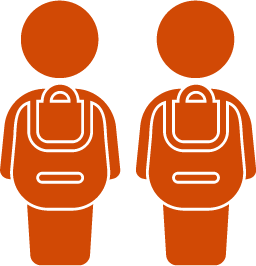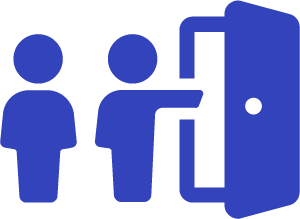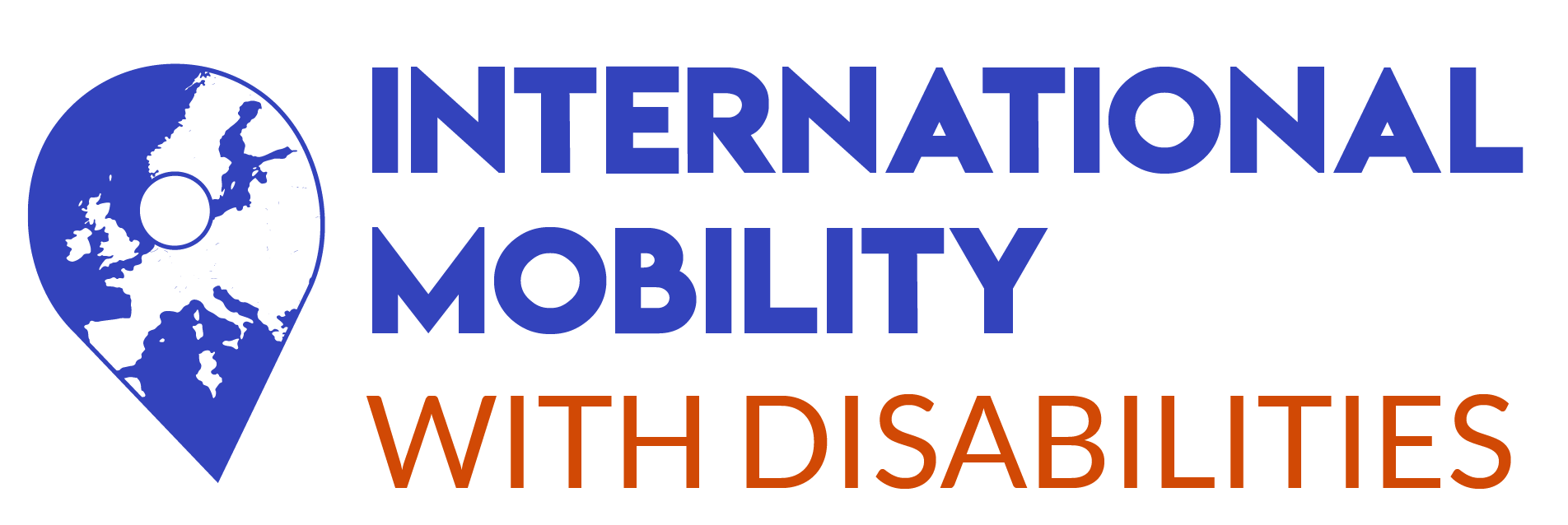
FOR YOUTH WORKERS & ORGANIZATION

Host a young person with disabilities
This page is directed to international mobility host structures. How to adapt and welcome young people with disabilities? How can we provide them with the necessary information and accompany them before and after their arrival? How to enable these young people to make the most of their mobility? To get more advice, practical sheets are available in the toolbox of the platform.
1. Ensure good communication before and during the stay
Host organisations must understand the needs of young people with disabilities in order to prepare their arrival and integration. For this, communication before and during mobility is essential.
If you are welcoming a young person with a disability into your organization, it is essential to be aware of the specific needs and accommodations that this young person will require on site.
While waiting for the arrival of the young person, you can be proactive in the search for accessible places, housing and transportation. As the host institution is located in the place of mobility, you will have a better knowledge and will be able to easily look for the amenities corresponding to the young person’s needs. The procedures can sometimes be complicated by a language barrier. As the host organization, you may be asked to be the contact person to finalize the procedures. It can be interesting to get in touch with national or local associations in order to work on partnerships or tools that facilitate the arrival and immersion of young people with disabilities in your city.
→ Getting informed
Informing oneself about the specific needs of the young person is the first step. Indeed, these young people do not constitute a homogeneous group with the same needs and expectations from the host structures. It is essential to know the target group in order to provide the right support and redirect them to the appropriate structures. Communication therefore takes place upstream: dialogue with the young person but also with the people around him/her, whether it be the family or associative and medical structures, is essential in order to know the situation and to allow for a smooth arrival in the country.
The host organisation should also inform about its willingness to welcome young people with disabilities in its communication to show that it is willing to take into account the needs of each person.
→ Supporting the arrival
Once they have been informed, the host structures must target and offer specific services according to the young person’s needs. These services must also meet the needs of young people regardless of their disability; this involves training the accompanying staff to offer quality services targeted at young people with disabilities. Promoting equal opportunities for young people with disabilities requires practical and logistical support, but the aim is for these young people to have the same social and professional opportunities as everyone else. Removing certain barriers such as the digital barrier to enable them to take part at all levels in the education offered is essential for example. Accessibility therefore includes for instance the presence of a caregiver, adapted accommodation, a sign language interpreter, an adapted activity programme, or making content suitable for people with visual impairments for example.
Encourage the search for best practices within the host structure, try to progress to allow these young people to fully benefit from this experience. This means providing technical assistance and information on the subject to everyone in the host organisation, including students, their families, teachers, administrators and administrative staff.
There are some important aspects to consider, such as accessibility of accommodation, transport and medical support. Once these needs have been identified and cared for, the next step is to integrate the young person into the social and cultural life of the host structure. Obviously, these steps are not the same depending on the type of mobility, the young person will not prepare in the same way for a 6-month voluntary service or for a short mobility. The needs are different, and health questions in particular will not be the same.
To facilitate the arrival of the young person it is recommended to prepare a small specific welcome guide which includes all necessary information regarding the stay, it should be communicated to all the participants. It can also include some small pieces of advice to make the mobility more serene, for example:
- Fill in all the emergency numbers and designate a contact person for the trip within your team. This person will have to make sure that the mobility of the young person is well taken care of and can be contacted for any question related to accessibility.
- Provide contacts for practitioners and doctors according to the needs of the participants.
- Attach a map of the city with indications of accessible transport lines, accessible public toilets… do not forget options of entertainment (bars, restaurants, theaters…).
2. Inclusion in daily activities
As mentioned above, the integration of young people with disabilities is possible because the people around them in this mobility process are informed, trained and interact both with the young persons involved and with each other. All the structures allowing the arrival and the integration of the young person must identify each other.
Integration into university and community life is important for the young person to make the most of his or her mobility. The social environment, the setting up of a pairing system within the university for example, is essential. Including the young person in social networks and enabling him or her to get to know the structures around, particularly student associations, is very important.
In this respect, it is also necessary to include the young person in the activities of the host structure. It is therefore necessary to ensure that certain activities (social, cultural, sporting) are accessible and to offer alternatives if necessary. Thus, the implementation of short, entertaining activities, explained with appropriate language, adapted to the disability in question (thanks to inclusive visual aids for example) can be put in place. The readability of the programme, the type of activity, the accessibility and layout of the venue and of the transport, the training of the people supervising the activity, particularly on how to interact with the participants according to the type of disability are different aspects to be taken into account.
At the same time, the teams at the host facility must ensure that the activity program is compatible with the young person’s accommodations. It is important to remember that the young person cannot be forced to communicate any personal information about his or her state of health and disability.
The host structure takes care of the daily management of the young people during their mobility, but also takes care of the logistics for the trips organized during the stay but also for the return to their country. You can refer to the section on the sending structure for the modalities for the organisation of a trip.
More ressources about this can be found on the Toolbox of the website.

